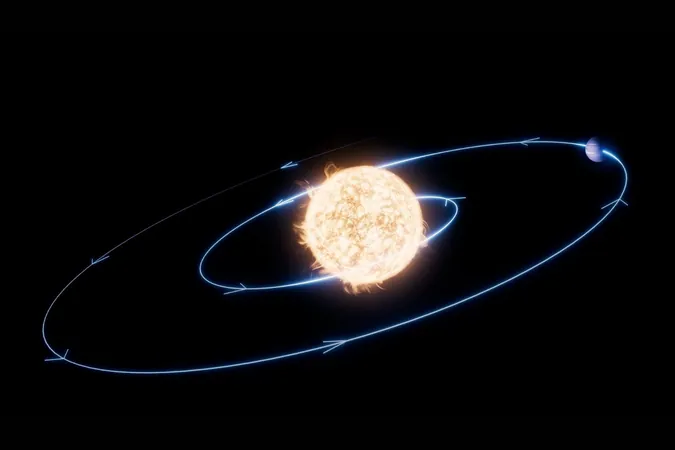
Webb Telescope Shatters Astronomers' Assumptions About Dying Planet
2025-04-13
Author: Ken Lee
In a jaw-dropping revelation from NASA's James Webb Space Telescope, astronomers have unearthed a cosmic enigma that turns previous understanding on its head. The focus of this revelation? A distant star, located a staggering 12,000 light-years away, showcased an unexpected surge in brightness that initially led scientists to believe it was devouring a neighboring planet.
However, thanks to Webb's advanced capabilities—the Mid-Infrared Instrument (MIRI) and the Near-Infrared Spectrograph (NIRSpec)—researchers discovered a different narrative. Instead of the star expanding into a giant red balloon and engulfing the planet, it remained surprisingly stable. This shocking find suggests that rather than a dramatic planetary ingestion, the poor planet was spiraling towards its doom in a slow-motion death spiral.
The new findings, published in The Astrophysical Journal, revealed that the planet in question, comparable in size to Jupiter, was orbiting alarmingly close to its star—much closer than Mercury's orbit around our Sun. Over eons, this precariously tight orbit led the planet to graze the star's atmosphere, causing its material to unravel and eventually plunge into the fiery depths of its host star, ZTF SLRN-2020.
Morgan MacLeod, an astrophysicist contributing to the study, remarked that the planet’s material was 'smeared around the star,' highlighting the dramatic interaction that ultimately led to its fiery demise. Ryan Lau, the lead author of the paper, expressed excitement about the revelations produced by Webb's high-resolution infrared observations, emphasizing the insights they provide into the life cycles of planetary systems, potentially including our own.
The brightening event that first drew attention appears to have been a result of the planet’s material colliding with the star, drastically altering historians' accounts of the first observed instance of a star actively engulfing a planet.
This fascinating observation was part of Webb’s Target of Opportunity program, which is dedicated to capturing unusual cosmic phenomena such as supernovas or destructive planetary trajectories. With the emergence of cutting-edge telescopes like the Vera Rubin Observatory and Nancy Grace Roman Space Telescope, we can expect to witness even more sensational and eerie tales of planetary demises in the universe.


 Brasil (PT)
Brasil (PT)
 Canada (EN)
Canada (EN)
 Chile (ES)
Chile (ES)
 Česko (CS)
Česko (CS)
 대한민국 (KO)
대한민국 (KO)
 España (ES)
España (ES)
 France (FR)
France (FR)
 Hong Kong (EN)
Hong Kong (EN)
 Italia (IT)
Italia (IT)
 日本 (JA)
日本 (JA)
 Magyarország (HU)
Magyarország (HU)
 Norge (NO)
Norge (NO)
 Polska (PL)
Polska (PL)
 Schweiz (DE)
Schweiz (DE)
 Singapore (EN)
Singapore (EN)
 Sverige (SV)
Sverige (SV)
 Suomi (FI)
Suomi (FI)
 Türkiye (TR)
Türkiye (TR)
 الإمارات العربية المتحدة (AR)
الإمارات العربية المتحدة (AR)